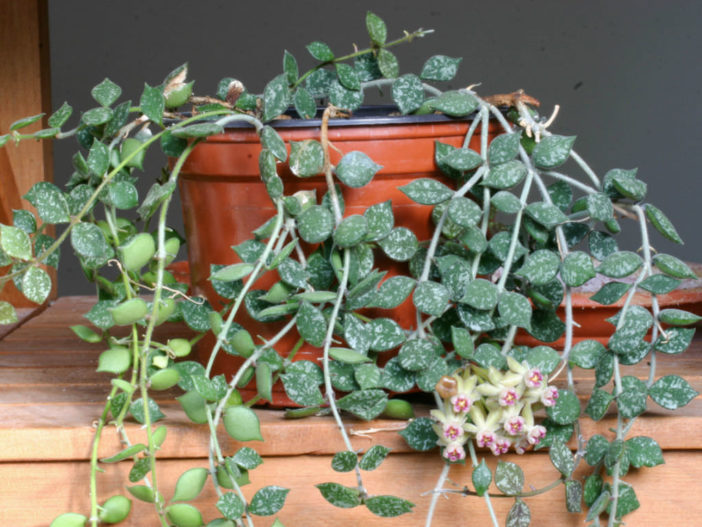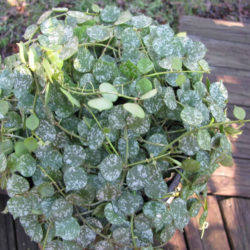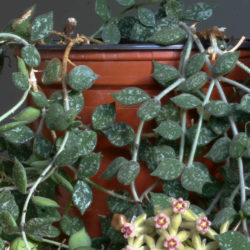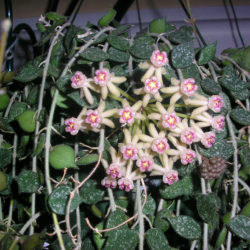Scientific Name
Hoya curtisii King & Gamble
Common Name(s)
Fung Wax Flower, Hoya Aloha, Porcelain Flower
Synonym(s)
Hoya curtisii subsp. curtisii
Scientific Classification
Family: Apocynaceae
Subfamily: Asclepiadoideae
Tribe: Marsdenieae
Genus: Hoya
Description
Hoya curtisii is a slow-growing plant with creeping or trailing stems that bear small, green, pointed leaves with silver speckling. It forms a dense mat over the soil before spilling over the sides of its pot and trailing nicely. The leaves are semi-succulent and can reach 0.5 inches (1.2 cm) in length.
The unusual flowers appear during the spring and summer in dense clusters and have fuzzy, yellowish-green corolla and off-white corona with a red or pink center.
Origin
Hoya curtisii is native to Thailand, Malaysia, Borneo, and the Philippines. It grows as a creeping epiphyte.

Hardiness
USDA hardiness zones 11a to 11b: from 40 °F (+4.4 °C) to 50 °F (+10 °C).
How to Grow and Care
Hoyas don't ask for much beyond the well-draining soil and the warm, humid conditions many tropical flowers crave. They don't like wet feet or heavy soil, and as many grow as epiphytes in nature. Give them at least a half-day of sunshine, and bring them indoors when temperatures drop below 50 °F (10 °C).
Hoya finishes blooming, leave the flower stalk, as it may produce new flowers. Removing the stalk forces the plant to produce a new stalk, which delays blooming and wastes energy. They are light feeders, and a monthly drink of compost tea or dilute fish emulsion provides all the nutrition these tropicals need. Hoyas like the security of a snug pot, and a bit of pot-bound plants will flower more prolifically than those swimming around in a giant pot.
Propagate Hoyas by cuttings of top growth or by leaf cuttings. The average cutting or leaf start will produce a blooming plant in 2 years or less. The easiest method of propagation is by layering.
See more at How to Grow and Care for Hoya.
Links
- Back to genus Hoya
- Succupedia: Browse succulents by Scientific Name, Common Name, Genus, Family, USDA Hardiness Zone, Origin, or cacti by Genus
Photo Gallery
Click on a photo to see a larger version.



